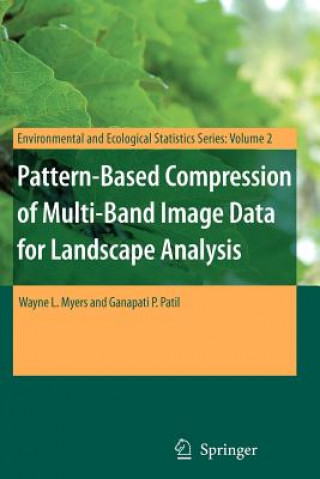
Livrare
Consilier de cumpărături





Nu se pretează? Nu contează! La noi puteți returna bunurile în 30 de zile
 Voucher cadou
orice valoare
Voucher cadou
orice valoare
Cu un voucher cadou nu veți da greș. În schimbul voucherului, destinatarul își poate alege orice din oferta noastră.
Pattern-Based Compression of Multi-Band Image Data for Landscape Analysis
 engleză
engleză
 318 b
318 b
30 de zile pentru retur bunuri
Ar putea de asemenea, să te intereseze


This book describes an integrated approach to using remotely sensed data in conjunction with geographic information systems for landscape analysis. Remotely sensed data are compressed into an analytical image-map that is compatible with the most popular geographic information systems as well as freeware viewers. The approach is most effective for landscapes that exhibit a pronounced mosaic pattern of land cover.Pattern-Based Compression of Multi-Band Image Data for Landscape Analysis describes an integrated approach to using remotely sensed data in conjunction with geographic information systems (GIS) for landscape analysis. Remotely sensed data are compressed by compound segmentation so that the first level is an image-like raster map for GIS, and a second level affords approximate restoration. Pattern processing is implemented in software by PSIMAPP Progressively Segmented Image Modeling As Poly-Patterns.§There are seven notable areas of advantage in this approach:§Controlling and creating contrast for pictorial presentations. §Classifying content for constructing categorical maps. Whereas digital image data are usually directed toward algorithmic assignment of image elements to candidate categories of content, this approach is equally applicable to assisting interactive interpretive assignment by a human analyst. §Detecting difference between instances of imaging. Whereas conventional change detection is done in the signal domain, this approach supports dual pattern matching in signal and spatial domains. §Advantage in contextual considerations. Having parsed patterns into collective components allows analysts to conduct comparatives in multiple modes. The components can be combined according to signal similarities and proximate positioning to generate generalized images that portray progressively more prominent patterning. The patterns can be treated as multivariate trends for removal to reach residuals that are regionalized in accordance with scenarios of spatial statistics. An entirely new arena of analysis is posed by pattern profiles of cumulated components over blocks at several scales. Compositional components of complexes can be considered in terms of chromaticity or ratio relations among signal sets by partial ordering and rank range runs.§Informational compression for conveyance by computer media. The poly-pattern models occupy the equivalent of two single-byte signal bands along with tables of pattern properties. §Although approximation in restoration might appear to be a drawback, it leads to the sixth aspect of advantage. Digital image data are often proprietary with strictures on distribution. Since the poly-pattern models do not provide capability for complete restoration, and in view of their numerous advantages, they become substantially different derivative products in much the same manner as a thematic map. Therefore, most of the proprietary concerns relative to the original data should be obviated.§The interface between image analysis and GIS. GIS provides the popular platform for utilization of geo-spatial information. Since relatively few of the regular GIS users are image analysts, poly-pattern packaging facilitates broader access to image-based information.
Informații despre carte
 engleză
engleză
Categorii




 Cum să cumpăr
Cum să cumpăr























